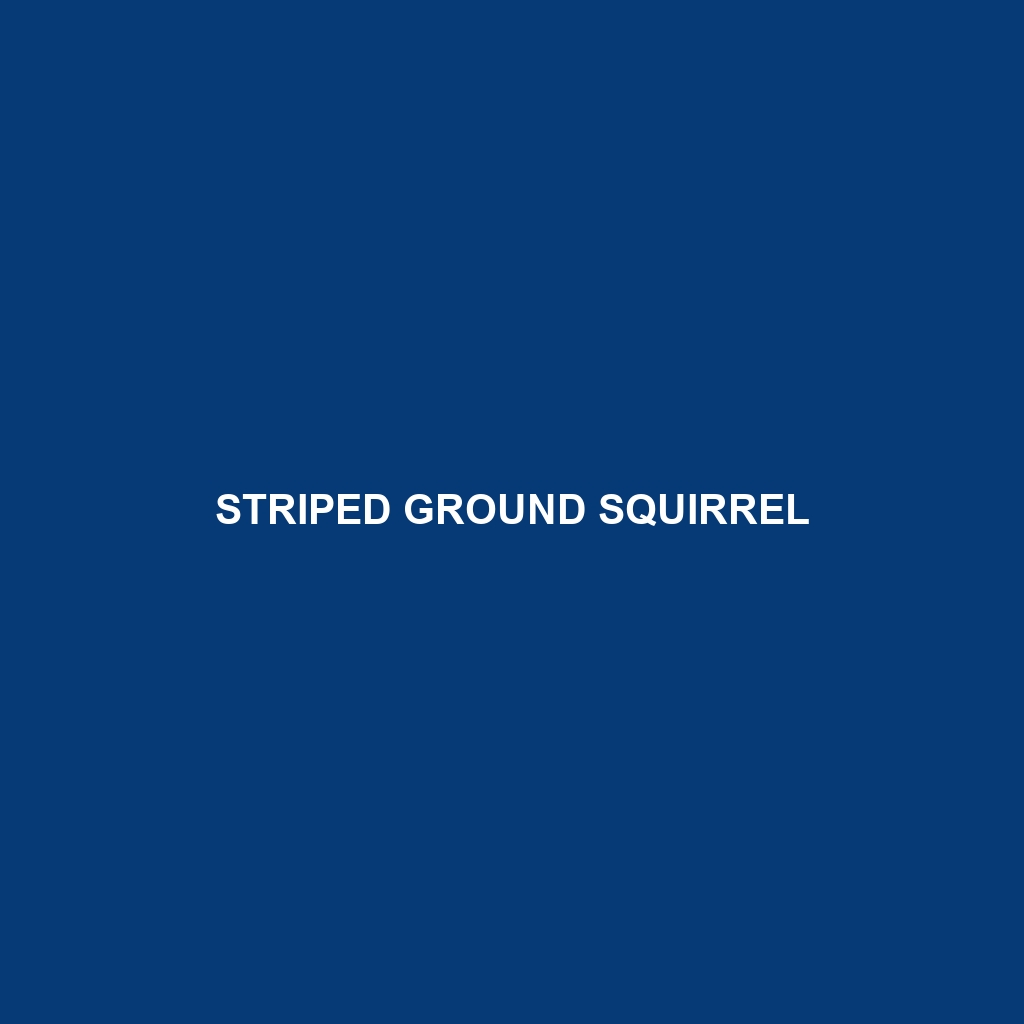Striped Ground Squirrel Overview
Common Name: Striped Ground Squirrel
Scientific Name: Urocitellus beldingi
Habitat
The Striped Ground Squirrel is primarily found in North America, particularly across the western United States and parts of Canada. This species inhabits open grasslands, sagebrush habitats, and meadows, often favoring areas near rocky outcrops or burrows. They are commonly sighted at elevations ranging from lowlands to mountainous regions.
Physical Characteristics
The Striped Ground Squirrel typically measures between 20 to 25 cm (8 to 10 inches) in length, including its bushy tail. These squirrels are noted for their striking fur pattern; they possess a soft, sandy-brown coat with distinctive dark stripes running along their backs. Their slender bodies, large eyes, and bushy tails help them escape predators and navigate through their environment effectively.
Behavior
Striped Ground Squirrels are diurnal, displaying high levels of activity during daylight hours. They are known for their social behavior, often seen foraging in groups. Their typical behaviors include sunbathing, foraging, and engaging in complex vocal communications with one another to alert of potential threats. They exhibit a fascinating hibernation behavior, where they go into a state of torpor in colder months to conserve energy.
Diet
The Striped Ground Squirrel primarily feeds on a variety of plant materials, including seeds, nuts, fruits, and grasses. Additionally, they are known to consume insects and other invertebrates, making them opportunistic feeders. Their diet is vital for their survival and plays a role in seed dispersion, benefiting the ecosystem.
Reproduction
Breeding for the Striped Ground Squirrel typically occurs in the spring, after emerging from hibernation. Females give birth to a litter ranging from 4 to 8 pups after a gestation period of about 30 days. These young squirrels are born altricial, meaning they are born hairless and helpless, relying on their mother for warmth and nourishment until they are old enough to venture out of the burrow.
Conservation Status
The Striped Ground Squirrel is currently classified as a species of “Least Concern” by the IUCN. However, habitat destruction and climate change pose ongoing threats to their population stability. Conservation efforts focus on preserving their natural habitats to ensure future generations thrive.
Interesting Facts
– Striped Ground Squirrels have been observed using their tails to communicate through various movements.
– They are capable of running at speeds up to 20 miles per hour when evading predators, showcasing their agility and quick reflexes.
Role in Ecosystem
The Striped Ground Squirrel plays a significant role in its ecosystem as both a seed disperser and a prey species. By foraging on a wide range of plant materials, they contribute to plant diversity. Moreover, their burrowing activities aerate the soil and promote nutrient cycling, which benefits surrounding vegetation. Moreover, they serve as a food source for predators, including hawks, coyotes, and snakes, thereby maintaining the food web balance.
